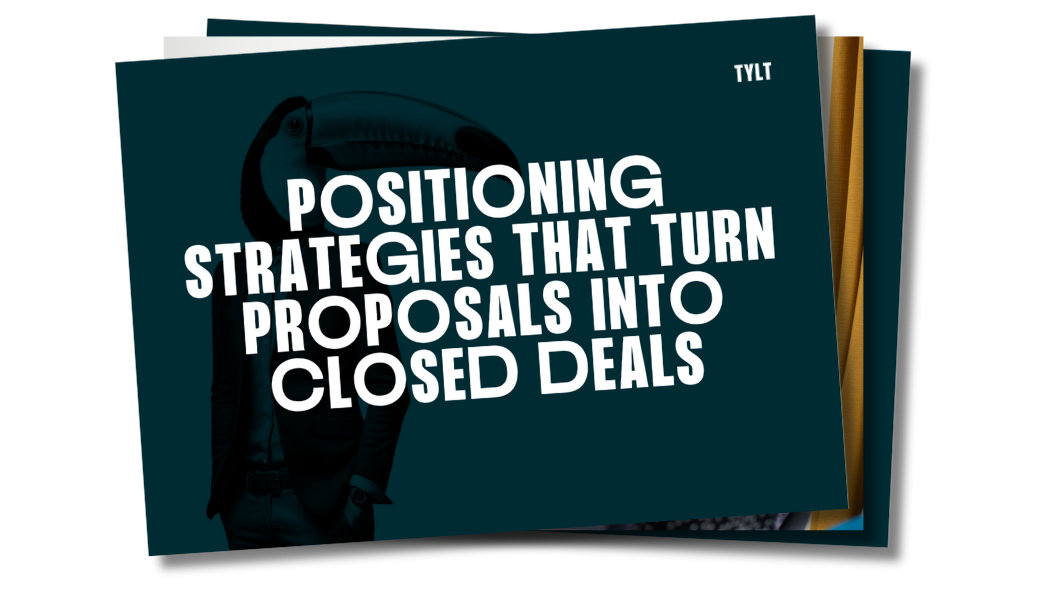THE DAY A CoNSULTANcY LoST A dEAL BEFoRE THEY EVEN SPoKE
Written by Matt Hodkinson
The meeting room was quiet. Too quiet.
The consultancy leader clicked through their carefully crafted deck, pausing for effect. Nothing landed. The clients were nodding, smiling politely, but they weren’t leaning in. They weren’t curious. They weren’t captivated.
Slide after slide featured well-worn terms: “solutions”, “transformation”, “trusted partner”. Phrases that sounded familiar. Too familiar.
And that was the problem.
The consultancy didn’t lose the deal because of their capabilities. They lost it before they even spoke. Because the language they used told the client exactly what to expect: more of the same. Another firm saying the same things in the same way.
They weren’t rejected. They were ignored.
THE SETUp: WHEN FAMILIAR = FoRgETTABLE
This wasn’t their first pitch. The team had rehearsed. The research was solid. The design of the deck? Slick. The problem wasn’t in the prep. It was in the perception.
Without realising it, they’d camouflaged themselves into the background. They’d tried to play it safe. Stick to the norm. Use ‘professional’ language. But that language signalled nothing unique. It didn’t spark interest. It didn’t say, We see things others don’t.
It said, We’re just like everyone else.
THE INVISIBILITY pRoBLEM: SAFETY IS THE NEW RISK
Consultancies often lean on industry-safe language. But “safe” isn’t neutral. It’s invisible. And in a crowded market, invisible is fatal.
Words like “customised solutions” and “delivering transformation” have lost all meaning. They’re filler. White noise. They don’t tell your clients anything about how you actually think or why you’re different. They don’t build anticipation. They don’t open a conversation.
They shut it down before it begins.
THE SHIFT: SAME MEETINg, DIFFERENT ENdINg
Now imagine a different consultancy walking into that same room. Same clients. Same challenge. But a different energy.
This team opens with a story. A specific one. They ditch the boilerplate buzzwords and lead with a sharp insight: “Your industry isn’t broken. Your lens is.” They talk about their Edge Lens Framework, a process with its own name, language, and visual. They use phrases the client hasn’t heard before but instantly understands.
They don’t say “transformation”. They talk about “margin blind spots” and “growth gravity wells”.
Suddenly the room changes. People sit forward. Pens come out. Questions start flying.
Because this consultancy doesn’t sound like a consultancy.
They sound like a category of one.

WHY LANgUAgE = pERcEpTIoN
Language is your positioning. Every word you use either reinforces your uniqueness or buries it. You’re either creating curiosity or you’re confirming suspicion that you’re just like the last three firms who pitched.
It’s not just about being clever. It’s about being clear, ownable, and resonant.
When you create your own terminology, your own frameworks, metaphors, and language, you shift perception. You move from being a consultancy to the consultancy your prospects remember.
It’s not fluff. It’s a commercial lever.
Great language unlocks:
-
Recognition – You sound different, so you get noticed.
-
Trust – Specificity builds credibility fast.
-
Conversion – Fresh language is a fast track to “Tell me more.”
YoUR TURN: WHAT IS YoUR LANgUAgE SAYINg?
Go back and open your last proposal. Or pitch deck. Or website. Read it with fresh eyes.
What’s really being said? Are you using words that mean something to your prospect, or words that just make you feel safe?
Are you signalling expertise, or echoing industry wallpaper?
You don’t need a new slide deck. You need a new lexicon. One that reflects the way you see the world, and makes your clients want to see it that way too.
Want to become the firm your clients can’t ignore?
Start by auditing your language. Then build your own terminology, frameworks and story with help from our free resource (instant access, no forms):


